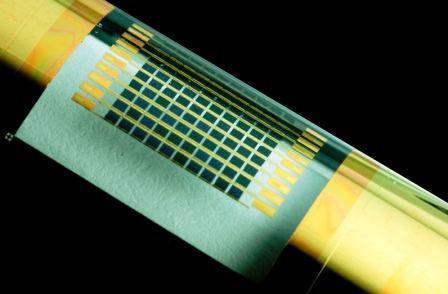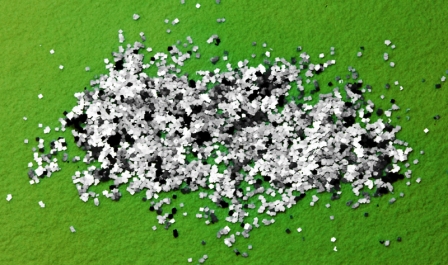University of Illinois Researchers Demonstrate Innovative Approaches to Lower Photovoltaic Panel Production Costs
Even if silicon is actually the industry common semiconductor in the majority of electric products, including the solar cells that photovoltaic panels employ to convert sunshine into electricity, it is not really the most effective material readily available. For instance, the semiconductor gallium arsenide and related compound semiconductors offer practically two times the performance as silicon in solar units, however they are rarely utilized in utility-scale applications because of their high production value.
University. of Illinois. teachers J. Rogers and X. Li discovered lower-cost ways to produce thin films of gallium arsenide which also granted usefulness in the types of units they might be incorporated into.
If you can minimize substantially the cost of gallium arsenide and other compound semiconductors, then you could increase their variety of applications.
Typically, gallium arsenide is deposited in a single thin layer on a little wafer. Either the desired device is produced directly on the wafer, or the semiconductor-coated wafer is cut up into chips of the preferred dimension. The Illinois group chose to put in multiple levels of the material on a one wafer, making a layered, “pancake” stack of gallium arsenide thin films.
Figure 1 Thin Film Solar 
Source: University of Illinois
If you increase ten levels in one growth, you only have to load the wafer once saving substantially on production costs. Current production processes may require ten separate growths loading and unloading with heat range ramp-up and ramp-down adds to time and costs. If you take into account what is necessary for each growth – the machine, the procedure, the time, the people – the overhead saving derived though the new innovative multi-layer approach, a substantial cost reduction is achieved.
Next the scientists independently peel off the levels and transport them. To complete this, the stacks alternate levels of aluminum arsenide with the gallium arsenide. Bathing the stacks in a solution of acid and an oxidizing agent dissolves the layers of aluminum arsenide, freeing the single thin sheets of gallium arsenide. A soft stamp-like device picks up the levels, one at a time from the top down, for shift to one other substrate – glass, plastic-type or silicon, based on the application. Next the wafer could be used again for an additional growth.
By doing this it’s possible to create considerably more material much more rapidly and much more cost effectively. This process could make mass quantities of material, as compared to simply the thin single-layer way in which it is usually grown.
Freeing the material from the wafer additionally starts the chance of flexible, thin-film electronics produced with gallium arsenide or many other high-speed semiconductors. To make products which can conform but still retain higher performance, which is considerable.
In a document published online May 20 in the magazine Nature the group explains its procedures and shows three types of units making use of gallium arsenide chips made in multilayer stacks: light products, high-speed transistors and solar cells. The creators additionally provide a comprehensive cost comparability.
Another benefit of the multilayer method is the release from area constraints, specifically important for photo voltaic cells. As the levels are removed from the stack, they could be laid out side-by-side on another substrate to create a significantly greater surface area, whereas the typical single-layer process confines area to the size of the wafer.
Figure 2 Solar Arsenium 
Source: University of Illinois
For solar panels, you want large area coverage to catch as much sunshine as achievable. In an extreme situation we could grow adequate levels to have ten times the area of the traditional.
After that, the team programs to explore more potential product applications and additional semiconductor resources that might adapt to multilayer growth.
About the Source – Shannon Combs publishes articles for the residential solar power savings web log, her personal hobby weblog focused on recommendations to aid home owners to save energy with solar power.
axa insurance newry
Greetings! I’ve been following your website for a long time now and
finally got the courage to go ahead and give you a shout out from Huffman Texas!
Just wanted to say keep up the great job!